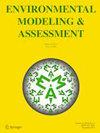分析碳排放和不可再生能源使用对欧洲婴儿和5岁以下儿童死亡率的影响:使用小组分位数回归的新证据
IF 2.6
4区 环境科学与生态学
Q3 ENVIRONMENTAL SCIENCES
引用次数: 3
摘要
本研究批判性地考察了健康-环境话语,并使用婴儿和5岁以下儿童死亡率、碳排放和不可再生能源来调查其内在联系。我们认为,温室气体排放的浓度被认为在增加,并可能破坏获得健康生活所必需的基本资源的机会,例如获得食物、水、健康和环境。环境卫生与人类健康密切相关。世界正在目睹温室气体排放量的大幅增加,这对环境和人类健康构成重大威胁。因此,本研究有助于利用2005年至2015年46个欧洲国家的不平衡面板数据来探讨碳排放和不可再生能源对婴儿和5岁以下儿童死亡率的影响。静态和动态分析结果一致表明:(1)碳排放与死亡率呈正相关;(2)不可再生能源呈显著负相关;(3)死亡率持续存在;(4)在较高的死亡率分布下,排放量(不可再生能源)的绝对值正(负)相关减小(增加);(5)与非欧盟国家相比,欧盟国家的死亡率较低。讨论了政策建议。本文章由计算机程序翻译,如有差异,请以英文原文为准。
Analysing the Impact of Carbon Emissions and Non-Renewable Energy Use on Infant and Under-5 Mortality Rates in Europe: New Evidence Using Panel Quantile Regression
This study critically examines the health-environment discourse and uses infant and under-5 mortality rates, carbon emissions, and non-renewable energy to investigate the inherent associations. We argue that the concentration of greenhouse gas emissions is considered to increase and can undermine the access to basic resources necessary for leading a healthy life, such as access to food, water, health, and the environment. Environmental health is closely linked to human health. The world is witnessing a substantial increase in greenhouse gas emissions, which pose a significant threat to both environment and human health. Hence, this study contributes to the discourse with unbalanced panel data on 46 European countries from 2005 to 2015 to investigate the impact of carbon emissions and non-renewable energy on infant and under-5 mortality rates. Consistent findings from static and dynamic analyses reveal that (1) carbon emission is positively associated with mortality rate; (2) non-renewable energy shows a significant negative relationship; (3) persistency in mortality rates exists; (4) positive (negative) association of emissions (non-renewable energy) dwindles (increases) in absolute value at higher distributions of mortality rates; and (5) Euro Union countries show lower mortality rates relative to non-Euro Union members. Policy recommendations are discussed.
求助全文
通过发布文献求助,成功后即可免费获取论文全文。
去求助
来源期刊

Environmental Modeling & Assessment
环境科学-环境科学
CiteScore
4.50
自引率
4.20%
发文量
54
审稿时长
18-36 weeks
期刊介绍:
Environmental Modeling & Assessment strives to achieve this by publishing high quality, peer-reviewed papers that may be regarded as either instances of best practice, or as studies that advance the evolution and applicability of the theories and techniques of modeling and assessment. Consequently, Environmental Modeling & Assessment will publish high quality papers on all aspects of environmental problems that contain a significant quantitative modeling or analytic component, interpreted broadly. In particular, we are interested both in detailed scientific models of specific environmental problems and in large scale models of the global environment.
We invite models of environmental problems and phenomena that utilise, in an original way, the techniques of ordinary and partial differential equations, simulation, statistics and applied probability, control theory, operations research, mathematical economics, and game theory.
Emphasis will be placed on the novelty of the model, the environmental relevance of the problem, and the generic applicability of the techniques used. Generally, papers should be written in a manner that is accessible to a wide interdisciplinary audience.
 求助内容:
求助内容: 应助结果提醒方式:
应助结果提醒方式:


